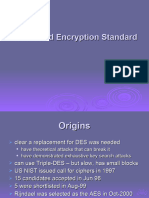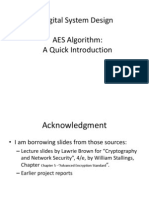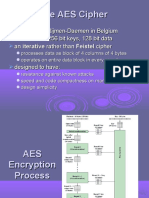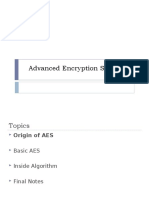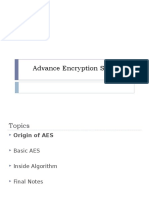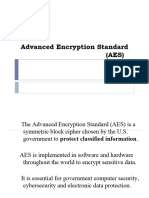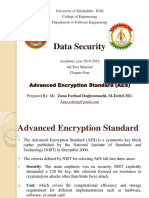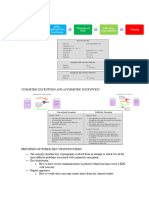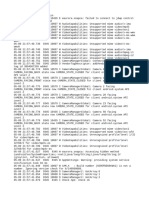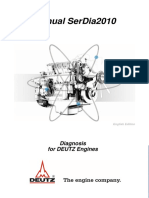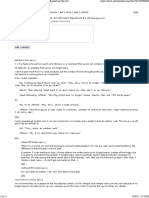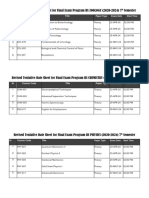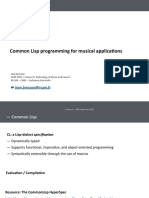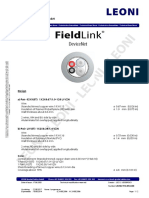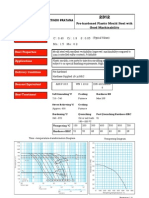0% found this document useful (0 votes)
111 views15 pagesAES Finite Field Arithmetic Guide
AES uses finite field arithmetic over GF(2^8). It operates on 128-bit blocks and has a key size of 128, 192, or 256 bits. The cipher structure consists of 10-14 rounds that apply four transformations: Substitute Bytes, ShiftRows, MixColumns, and AddRoundKey. The key expansion algorithm derives a key schedule from the input key to provide round keys. AES transformations and the key schedule were designed to resist cryptanalysis and can be efficiently implemented using table lookups and bitwise operations.
Uploaded by
Shivend MenonCopyright
© © All Rights Reserved
We take content rights seriously. If you suspect this is your content, claim it here.
Available Formats
Download as DOCX, PDF, TXT or read online on Scribd
0% found this document useful (0 votes)
111 views15 pagesAES Finite Field Arithmetic Guide
AES uses finite field arithmetic over GF(2^8). It operates on 128-bit blocks and has a key size of 128, 192, or 256 bits. The cipher structure consists of 10-14 rounds that apply four transformations: Substitute Bytes, ShiftRows, MixColumns, and AddRoundKey. The key expansion algorithm derives a key schedule from the input key to provide round keys. AES transformations and the key schedule were designed to resist cryptanalysis and can be efficiently implemented using table lookups and bitwise operations.
Uploaded by
Shivend MenonCopyright
© © All Rights Reserved
We take content rights seriously. If you suspect this is your content, claim it here.
Available Formats
Download as DOCX, PDF, TXT or read online on Scribd
/ 15








